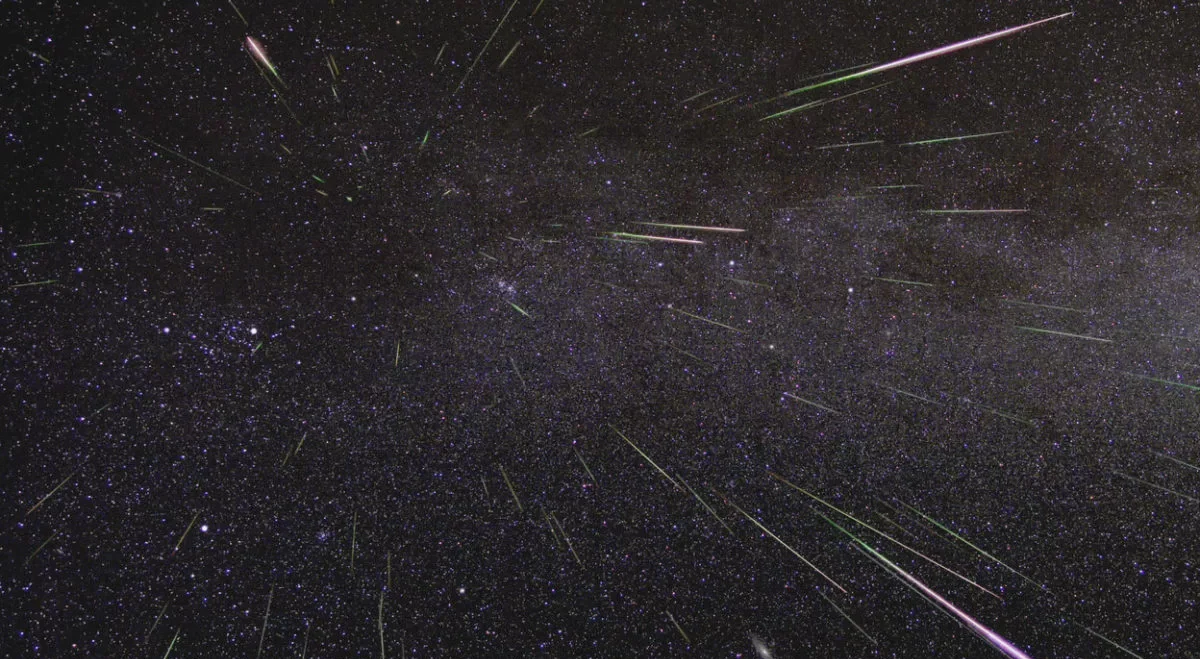Welcome to this month’s update to find out what’s in the night sky for November.
In the Elan Valley International Dark Sky Park, astronomical darkness lasts for 10 hours and 35 minutes at the beginning of the month from 18:39 and 11 hours and 47 minutes starting from 18:09 at the end. Plenty of time for stargazing!

An all-sky view of the constellations from 10pm in November from in-the-sky.org
Low on the southern horizon, you will see the constellation of Cetus. Higher up above the south, lie the constellations of Aries, Triangulum, Perseus and Cassiopeia. Westwards, the constellations of Andromeda and Pegasus are still well-placed, whilst the summer constellations of Cygnus, Lyra and Delphinus set in the west.
In the east, the spectacular constellation array of Orion, Gemini, Auriga and Taurus are well placed in the east, marching above the southern horizon during the month.
The Full Moon occurs on 5th November and the New Moon on 20th November. The Full Moon this month is known as a Supermoon, because it is at its closest point to the Earth as its orbit is elliptical. Supermoons can be 14% – 30% larger and brighter than normal – however, the size isn’t perceptible to our eyes.
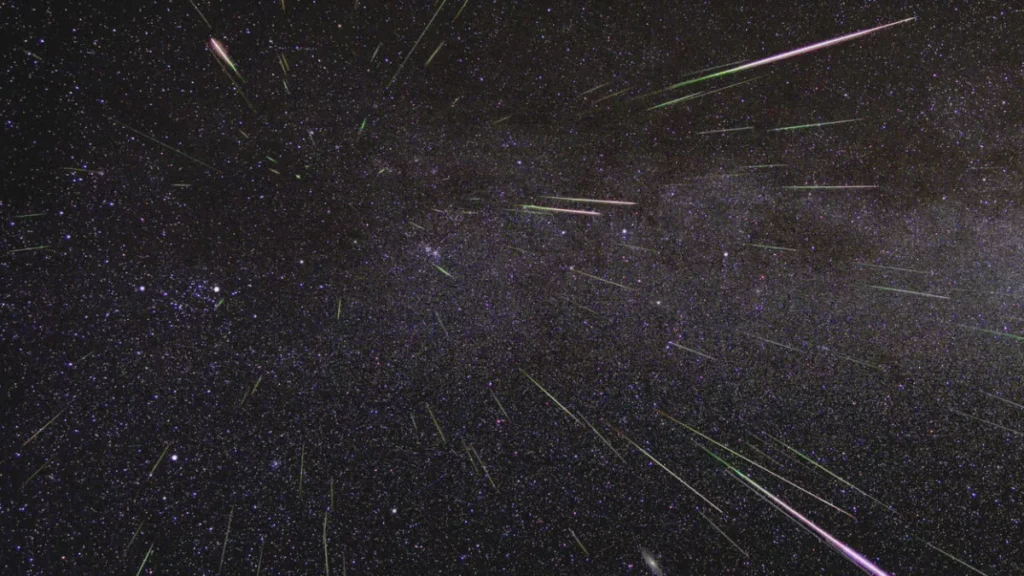
Leonid Meteor Shower
The Leonid meteor shower runs from November 6 to November 30, peaking during the late night of November 17. During this peak, you may see around 15 meteors per hour. The Moon won’t be in the sky during the peak, so the skies will be dark enough to enjoy this celestial spectacle. The Leonids are debris from Comet Tempel-Tuttle. These shooting stars are known for their speed and colourful tails, and even some fireballs and ‘Earth-grazers’!
Credit: JPL / NASA
Every 30 years, the Leonids can be a real treat, producing spectacular meteor storms that takes your break away. A notable storm was during 1833, where eyewitnesses recorded up to 100,000 meteors per hour! The most recent storm was during 2002, where around 3000 shooting stars could be seen. We only have a seven-year wait for the next storm!
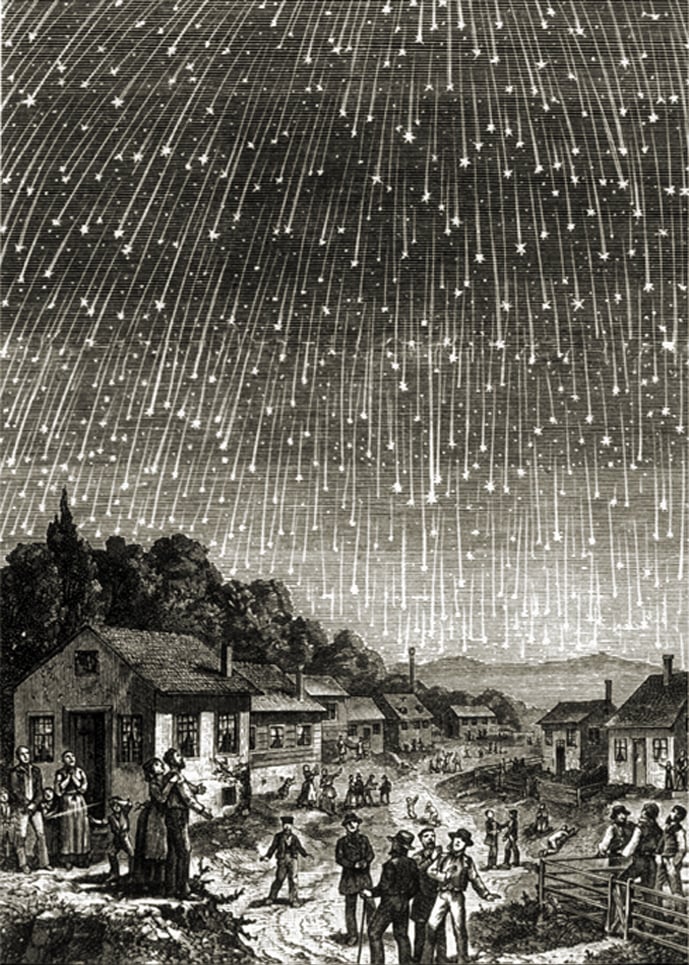

The Planets in November
November is Jupiter’s month – already low in the north-eastern horizon at nightfall and gaining altitude throughout November. Binoculars will reveal the planet as a large starlike blob, with a few of the Jovian moons visible, resembling beads on a string.
Saturn is also visible during November, and can be seen near the waxing gibbous Moon on 1st November.
Venus rises around 1.5 hours in the east before sunrise at the beginning of the month, but will lost in the morning light throughout November, as it loses altitude.
A Comet and a Star Cluster
Anyone with imaging equipment with tracking or a large telescope will have the opportunity to capture a rare spectacle.
Between 8-11 November, Comet 24P/Schaumasse will pass over the Beehive Cluster in the constellation of Cancer.
At this time of writing, it might be bright enough to see through a 10- or 12 inch telescope using a low power eyepiece.
The best time to see it is before midnight on 9th November.
Credit: Stellarium (graphics added)
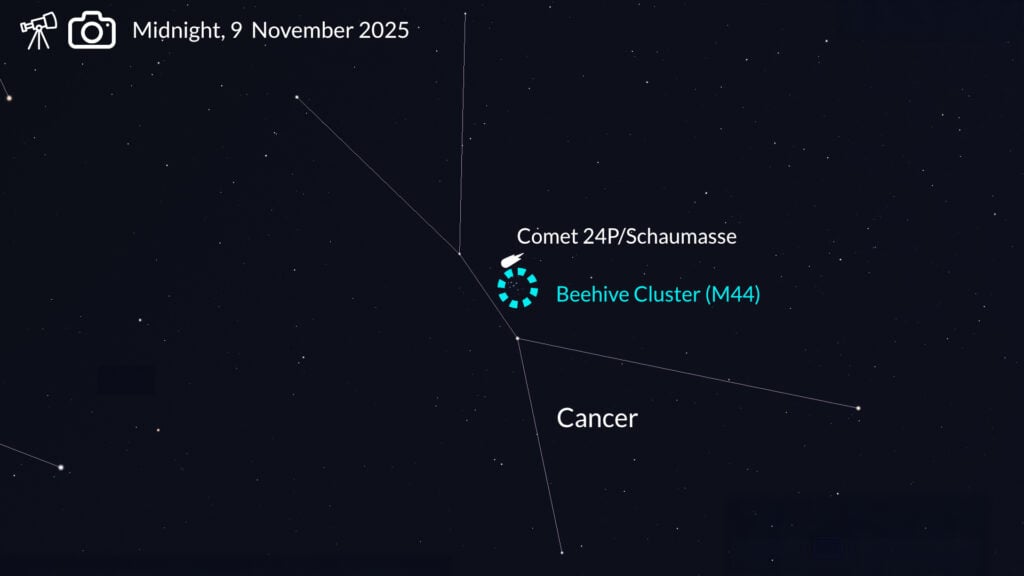
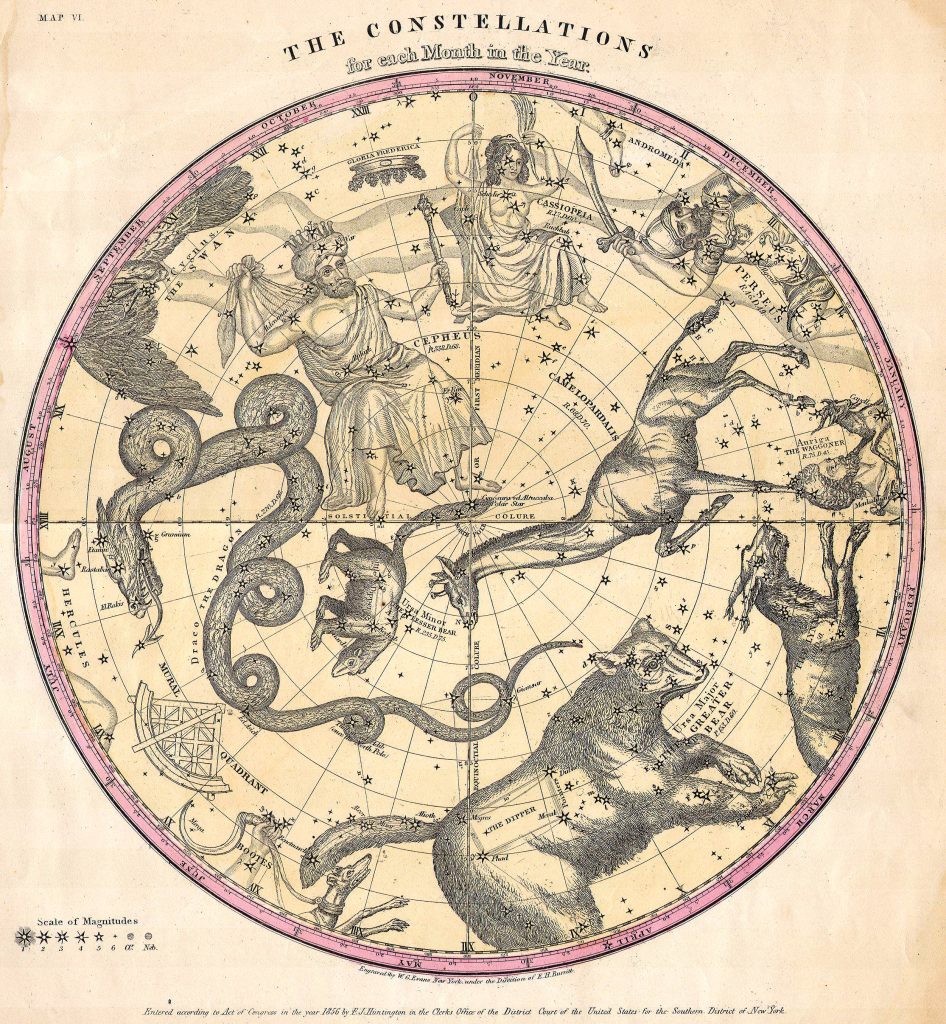
Constellation of the Month
Each month, we will feature a constellation and the mythology behind it.
There are 88 IAU recognised constellations in the night sky and around 36 that are observable in the northern hemisphere. Some of the names of the 88 IAU recognised constellations are several thousands of years old.
With the advent of science and rational thinking, and more of a focus on the observable world, stars are no longer used for the farming calendar, for navigation or conveying social or religious values.
Get outside and see if you can spot these constellations. The best time to see each constellation we feature is around 90 minutes after sunset.
Constellation of the month – Taurus
The constellation of Taurus the Bull is well-placed during the month of November and can be seen above the the south-eastern horizon, identified by the Pleiades Star Cluster and the arrow asterism.
Credit: Stellarium (graphics added)
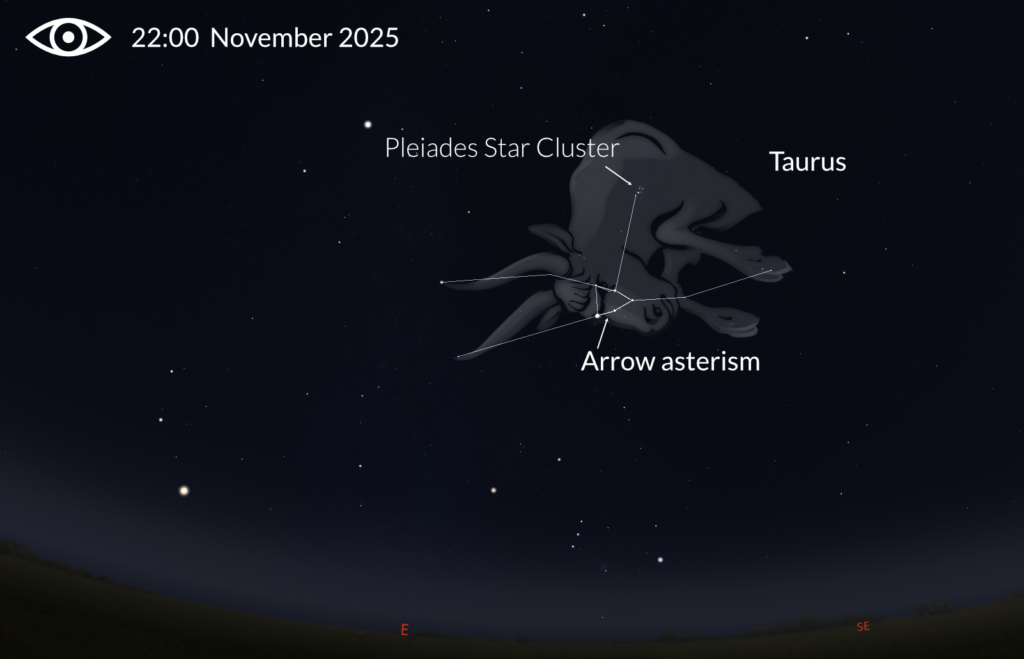
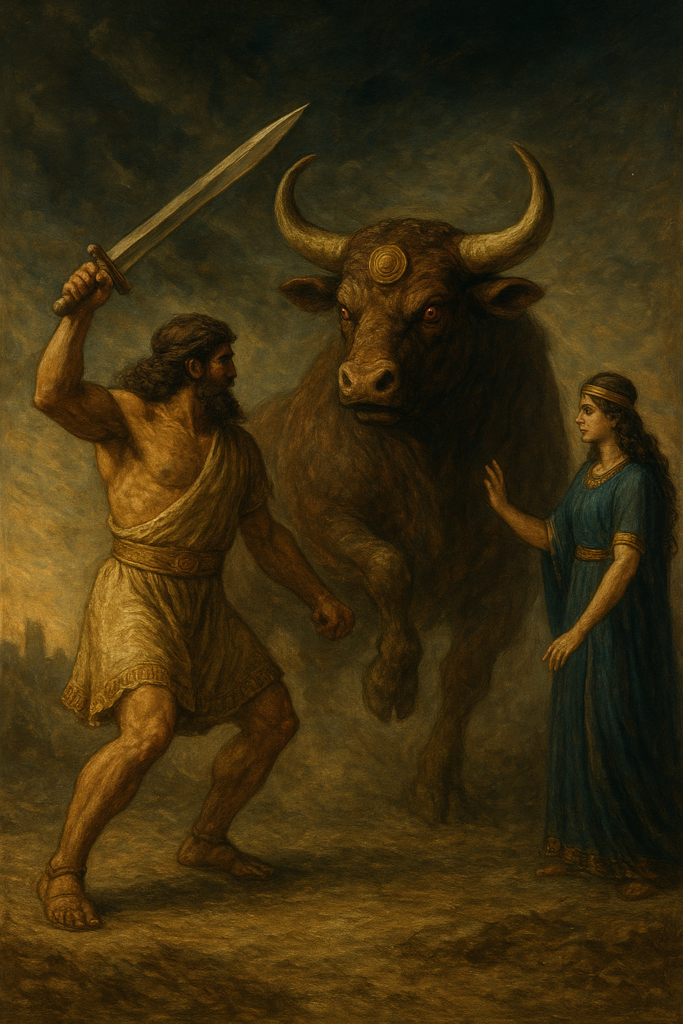
The Bull is associated with many ancient mythologies from across the world. In Mesopotamian mythology, this constellation is associated with the ‘Bull of Heaven’ in the Epic of Gilgamesh (2100 BC), sent by the goddess Ishtar (star) to attach Gilgamesh. The bull was defeated; its parts scattered across the night sky to form constellations.
In Egyptian mythology, the bull was thought to be the sacred Apis (2925 BC), symbolising fertility and strength. Within the constellation is the arrow asterism, which represented the renewal of the land after the winter.
Whilst in the vicinity of the constellation of Taurus, use your binoculars or small telescope to view a stunning star cluster. Called the Pleiades Star Cluster, or the Seven Sisters, these comparatively few, bright and stunning stars comprises 1000 in this open cluster and is situated 440 light years from Earth. A challenge for the keen sighted is to see how many stars can be seen with the unaided eye. Due to light pollution, most people can see six stars, even in a comparatively dark sky.
Credit: Stellarium (graphics added)
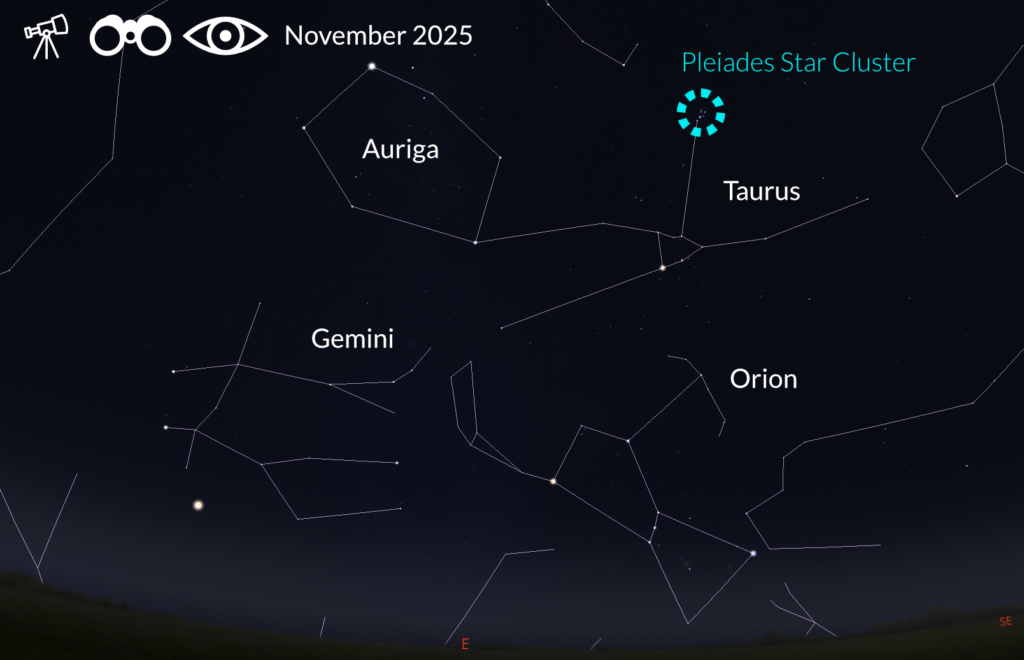
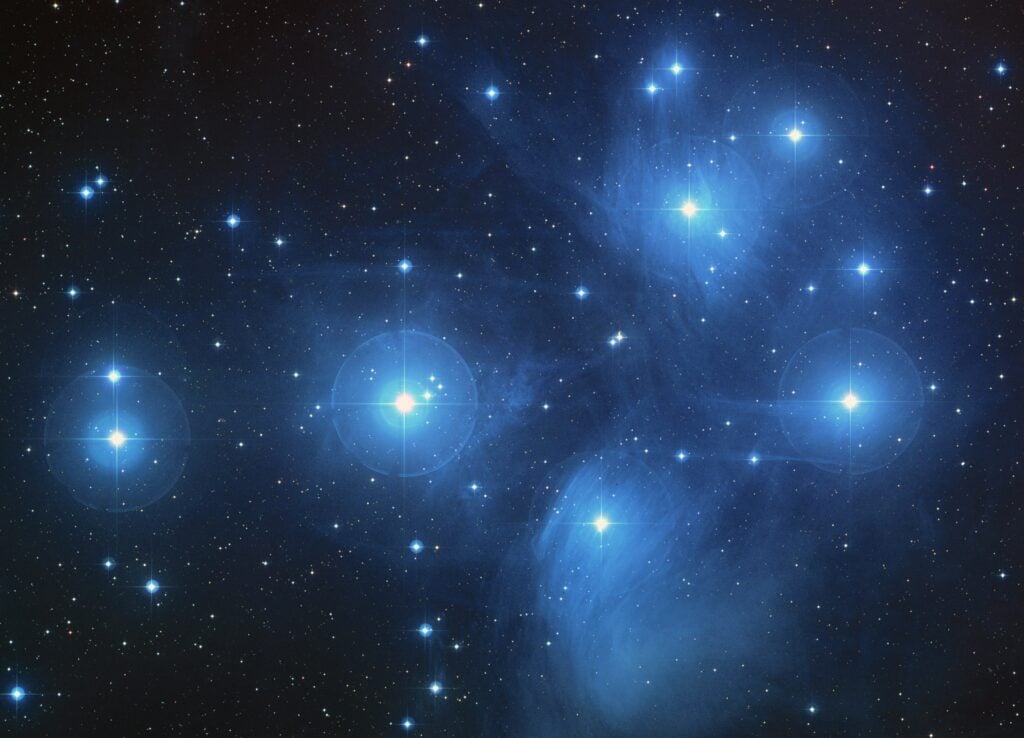
But 12 stars have been seen in exceptionally dark skies and most probably be difficult to see in these modern times, sadly due to the increase in air pollutants and background sky glow from the world’s cities. These young, hot and extremely bright stars light the gasses and dust that they were born from and this nebulous cloud can be spotted in telescopes of 8 inches and upwards.
NASA, ESA, AURA/Caltech, Palomar ObservatoryThe science team consists of: D. Soderblom and E. Nelan (STScI), F. Benedict and B. Arthur (U. Texas), and B. Jones (Lick Obs.), Public domain, via Wikimedia Commons

